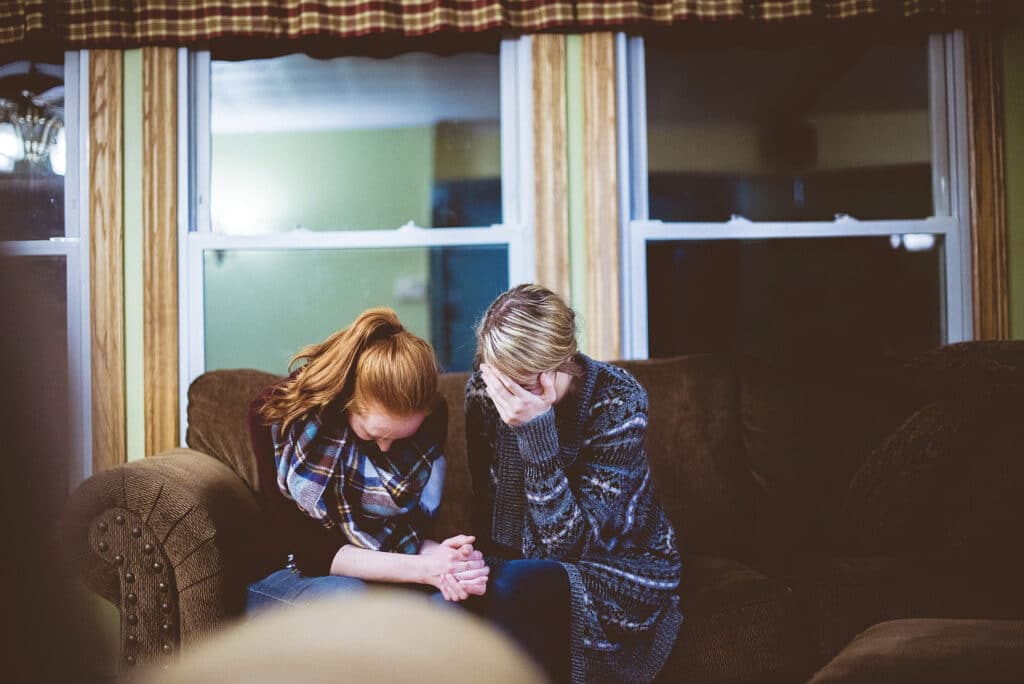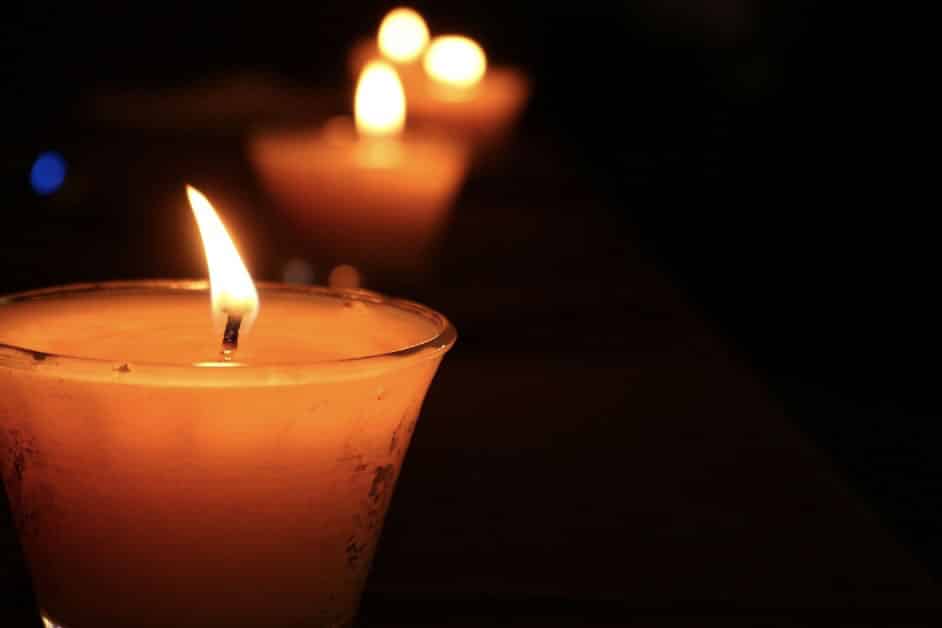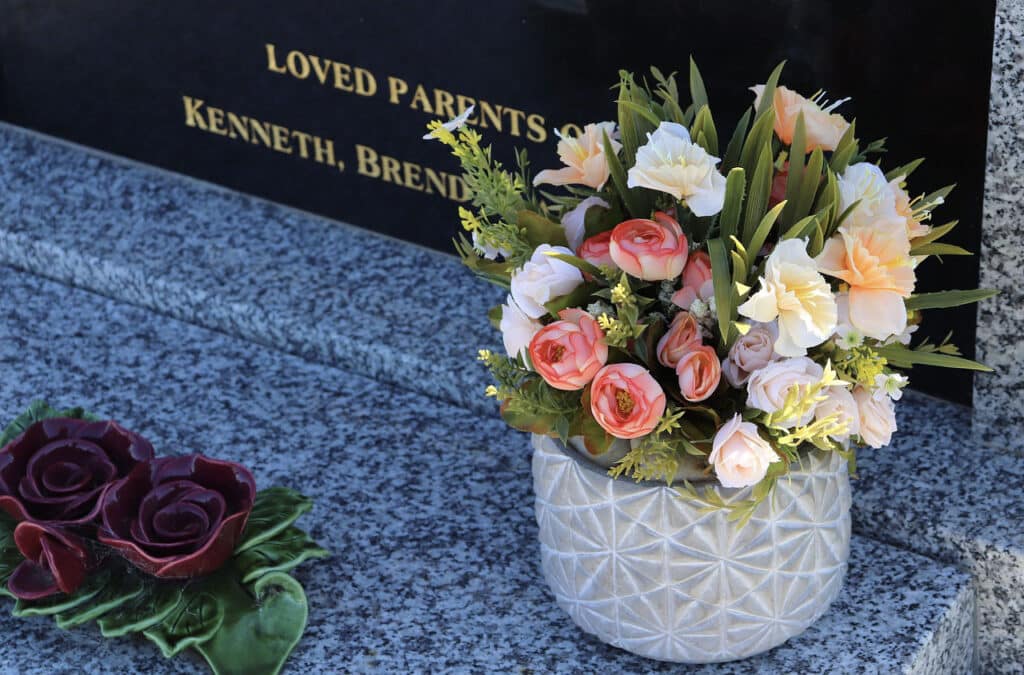The impact of suicide reverberates not just through individual lives but across entire communities. It’s a loss that carries a unique weight, shrouded in stigma and misunderstanding. As we strive towards a more informed and respectful approach to suicide, it’s essential to navigate this type of grief with sensitivity and compassion. This blog aims to provide practical tips for safe memorialisation and promote understanding of the complexities of suicide grief.
Facts about Suicide
In Australia, the stark reality of suicide statistics cannot be ignored. In 2019 alone, the Australian Bureau of Statistics reported 33,181 deaths by suicide, averaging nine lives lost every day. These numbers surpass fatalities from road accidents, pancreatic cancer, and breast cancer combined.
Suicide Stigma
Suicide is still judged and misunderstood in the community. For this reason, those who are grieving a loss to suicide experience more stigmatisation than survivors of most other types of death. This happens both in outright condemnation as well as in the social awkwardness that keeps people from interacting with the bereaved family. This may reinforce feelings of shame and confusion in the bereaved and cause further isolation in an effort to avoid the comments and attitudes of the community.

Each suicide death is different
Each suicide is a profoundly personal journey, shaped by the unique struggles and tribulations of the individual involved.
Take, for example, a woman who battled long-standing issues, seeking help for the underlying issues that eventually led her to make the heartbreaking decision to end her life. In response, her family might choose to honour her courage by openly addressing her suicide, bravely confronting the societal stigmas and misconceptions that surround mental health battles.
Conversely, consider another family blindsided by their loved one’s silent struggle, left grappling with uncertainty about the circumstances surrounding their death—was it a deliberate choice or a tragic accident?
In another scenario, a family might receive a coroner’s report confirming suicide as the cause of death, yet struggle to come to terms with or publicly acknowledge this conclusion due to deeply personal reasons.
Meanwhile, some families may feel compelled to shield their loved one’s suicide from their social or religious community, fearing harsh judgment or enduring stigma.
And then there are those families who have weathered years of anguish and heartache while supporting a deeply troubled individual. For them, the individual’s passing may bring a complicated mix of emotions, including a profound sense of relief, viewing it as an end to their loved one’s unrelenting suffering.
Ultimately, each family’s response to a loved one’s suicide is as unique and complex as the circumstances surrounding the tragedy itself.
Understanding Suicide Grief
Every loss is significant and can deeply affect those left behind. While grief after suicide shares similarities with other forms of bereavement, it also presents unique challenges and intensities. Suicide grief is a journey unlike any other, characterised by overwhelming emotions.


Research highlights five intense reactions typical of suicide bereavement:
1. Questioning/Guilt: Those bereaved by suicide often grapple with an intense need to comprehend why or how the person reached that point. They may excessively blame themselves, questioning their role in causing, missing, or failing to prevent the suicide, leading to confusion about their relationship with the deceased.
2. Isolation/Shame: Since suicide is an action of the deceased, the bereaved may perceive it as a rejection or a statement that their relationship was insufficient to keep the person alive.
3. Rejection/Abandonment: Individuals dependent on the deceased may feel abandoned, exacerbating feelings of rejection.
4. Anger: Feelings of rejection and abandonment can escalate to anger directed at the deceased, family, services, or oneself for perceived inadequacies in preventing the suicide.
5. Shock/Trauma: Suicide deaths often entail trauma, particularly for those witnessing the event or discovering the body. Trauma symptoms may emerge, accompanied by intrusive thoughts and a focus on the deceased’s state of mind before death.
The Healing Power of Memorialisation
A thoughtfully crafted memorial service or funeral service for someone lost to suicide can provide solace and aid in the grieving process, facilitating healing and recovery from the loss. These memorial activities serve as meaningful tributes to the life lost and the legacy they’ve left behind. They not only offer comfort to grieving individuals but also contribute to raising awareness and challenging the stigma surrounding suicide.
By creating safe spaces for remembrance and reflection, we pay homage to the memories of our loved ones while fostering a community of support and understanding.
Potential risk
The profound grief experienced in suicide bereavement, coupled with feelings of confusion, self-blame, and stigma, can lead the bereaved to grapple with their own suicidal thoughts. Research indicates that individuals bereaved by suicide are at a heightened risk of contemplating and acting on suicidal ideation compared to those affected by other forms of death.
It’s crucial to acknowledge that while funerals and memorials can be incredibly healing, they also have the potential to evoke distress among those recently bereaved or vulnerable to suicidal thoughts. Therefore, ensuring the safety and supportive nature of any memorial presentation, event, or activity is paramount to promoting healing and preventing further harm.
At Picaluna Funerals, a funeral director in Newcastle, we adhere to best practices by refraining from disclosing specific details of the suicide, such as the location or means of death. Research indicates that such disclosures can heighten distress and may inadvertently encourage imitative behaviour among vulnerable individuals.
Preferred Language
The power of language cannot be overstated, especially in discussions surrounding suicide. By using language that honours and respects individuals impacted by suicide, Picaluna Funeral Directors and Celebrants validate the experiences of our families and foster an environment of understanding and acceptance. Listening without bias and offering unwavering support can make a profound difference to those navigating the aftermath of suicide loss.
At Picaluna Funerals, we are mindful of the language we use, refraining from phrases that romanticise or glorify suicide, or depict it as an admirable choice. Instead, we choose words that acknowledge the complexity of suicide without perpetuating stigma surrounding its causes. Rather than suggesting the deceased is “at peace” or “no longer in pain,” which may inadvertently glamourise suicide, we recognise the deeply personal nature of the reasons behind it. By embracing language that is empathetic and respectful, we aim to create a safe and supportive environment for individuals affected by suicide loss.

Practical Tips for Safe Memorial Activities
Organising a memorial for a someone lost to suicide demands careful consideration and sensitivity. It’s crucial to prioritise self-care, for the organiser, the bereaved family and for attendees who may be navigating their own emotional challenges.
Drawing support from a network of friends, family, or support groups can provide invaluable emotional guidance throughout the funeral planning process.
Choosing a memorial format that respects cultural, religious, and personal preferences allows organisers to create a space that honours the deceased while acknowledging the diverse backgrounds of those in attendance.
Transparent communication with the funeral director and funeral celebrant regarding the nature of the loss and potential triggers is essential to ensure attendees feel adequately prepared and supported during the memorial event.
Instead of providing an open platform where anyone present is invited to speak, which may inadvertently increase distress, we offer an alternative approach. Memorial attendees can be invited to submit written tributes in advance, and a selection of these can be read out during the service.
For larger or high-profile public memorial services, arranging for counsellors or trained peer support workers to be available can provide immediate support to distressed individuals.
Mindful consideration should also be given to alcohol consumption at memorial events to ensure the safety and well-being of all attendees, fostering a supportive and respectful environment for remembrance.
As permanent memorials have the potential to unintentionally exacerbate distress among those struggling with suicidal thoughts, it’s advisable to avoid them altogether.
Creating a Meaningful Memorial Service
Creating a meaningful memorial service for a loved one lost to suicide involves several important considerations. Personalisation is key, as incorporating elements that reflect the unique life and personality of the deceased can help honour their memory in a deeply personal way. Celebrating life by focusing on positive memories and achievements allows attendees to remember the person beyond their final act, fostering a sense of connection and warmth.
It’s crucial to address the cause of death sensitively, acknowledging suicide while emphasising the individual’s humanity and the richness of their life.
Additionally, incorporating therapeutic elements such as rituals, art, or storytelling can provide catharsis and facilitate emotional expression for those grappling with grief. Consider including messages, information, music, stories, or poetry that promote hope and recovery.
Balloon releases, where attendees each release a helium-filled balloon, are discouraged. While they may seem symbolic, the balloons eventually fall and create litter that is harmful to wildlife and the environment. As we strive to honour our loved ones and protect our surroundings, alternative gestures can be considered to express remembrance and respect without causing harm.
Memorialisation Beyond the Service
Memorialisation goes beyond a single funeral service, extending into the realm of personal expression and community support. Encouraging personal expressions, such as letters, poems, videos, or artworks, allows family and friends to cherish memories privately.
Establishing meaningful remembrance rituals, be it on anniversaries or personal milestones, provides a unique way to continue honouring the memory of those lost to suicide.
Additionally, connecting with others who have experienced similar losses fosters a sense of solace and validation, reminding individuals that they are not alone in their journey of healing.
Furthermore, advocating for suicide prevention initiatives transforms grief into positive action, raising awareness and empowering communities to enact change.
Through these ongoing efforts, memorialisation becomes a powerful tool for honouring the past while fostering hope for the future.
Coping with Triggers and Challenges
Dealing with triggers and challenges stemming from grief after a suicide loss calls for a comprehensive approach. Firstly, it’s crucial to anticipate triggers by acknowledging that certain events or reminders may stir up intense emotions and memories. By preparing themselves mentally for these moments, individuals can better navigate the waves of grief that may arise.
Secondly, seeking professional help is paramount. Therapy or counselling provides a safe space for individuals to express their feelings, process their emotions, and gain valuable insights into managing their grief. Having a supportive outlet can make a significant difference in coping with the complexities of bereavement.
Equally important is prioritising self-care. Amidst the turmoil of grief, individuals must actively tend to their mental and emotional well-being. Engaging in activities that promote self-nourishment, whether it’s meditation, exercise, or spending time in nature, can provide moments of respite and rejuvenation.
Finally, seeking support from loved ones plays a crucial role in coping with the challenges of suicide bereavement. Sharing experiences and emotions with trusted friends and family members can offer comfort and validation, fostering resilience and strength on the journey toward healing.

Conclusion
Navigating suicide grief requires courage, empathy, and unwavering support. By embracing safe memorialisation practices and fostering understanding, we can honour the memories of those we’ve lost while championing mental health awareness and suicide prevention.
The Role of Picaluna Funeral Directors and Celebrants
At Picaluna Funerals, we understand the vital role that our Funeral Celebrants and Funeral Directors play in guiding individuals through the funeral ceremonies of those who have died by suicide. We serve as compassionate facilitators, navigating the intricate landscape of suicide grief with sensitivity and empathy.
Through active listening and the use of non-judgmental language, we demonstrate our willingness to engage in conversations about suicide and provide unwavering support to our families as they navigate their grief.
By acknowledging the unique challenges and emotions inherent in suicide bereavement, Picaluna staff create a nurturing and inclusive environment where mourners can pay tribute to their loved ones.
Through carefully chosen language and respectful ceremonies, we work to dismantle the stigma surrounding suicide while fostering a sense of unity and support among those affected by the loss.
We refrain from amplifying the pain experienced by the bereaved and instead encourage attendees to support each other and engage in community services aimed at providing assistance.
Beyond the ceremony itself, we offer resources to aid individuals on their journey toward healing and acceptance, underscoring our commitment to facilitating healing and providing compassionate care.
Several Picaluna Funeral Directors and Celebrants have undertaken SUICIDE AWARE FUNERAL STAFF TRAINING run by the national mental health organisation Neami National. This evidence-based training developed with and for funeral staff is university evaluated as improving participant’s awareness, confidence, communication and engagement when working with suicide bereavement funerals.
By Julie Muir Funeral Celebrant – Picaluna Funerals Newcastle
Resources
List of Australian Support Services
https://www.picaluna.com/support-services-for-people-affected-by-death-by-suicide/
“Suicide Response Resources – Media and Social Media.” By Be You, and Beyond Blue.
Information + Support Pack for those Bereaved by Suicide or other sudden death (NSW)
https://www.nslhd.health.nsw.gov.au/carer/Documents/6280_Bereavement%20Support_NSW_WEB.pdf
Lifeline Online Postvention Manual (US)
https://sprc.org/wp-content/uploads/2023/01/LifelineOnlinePostventionManual.pdf





